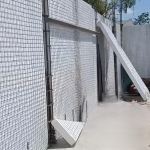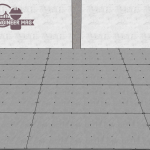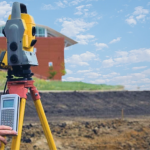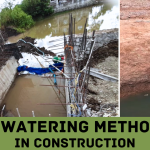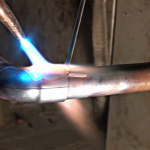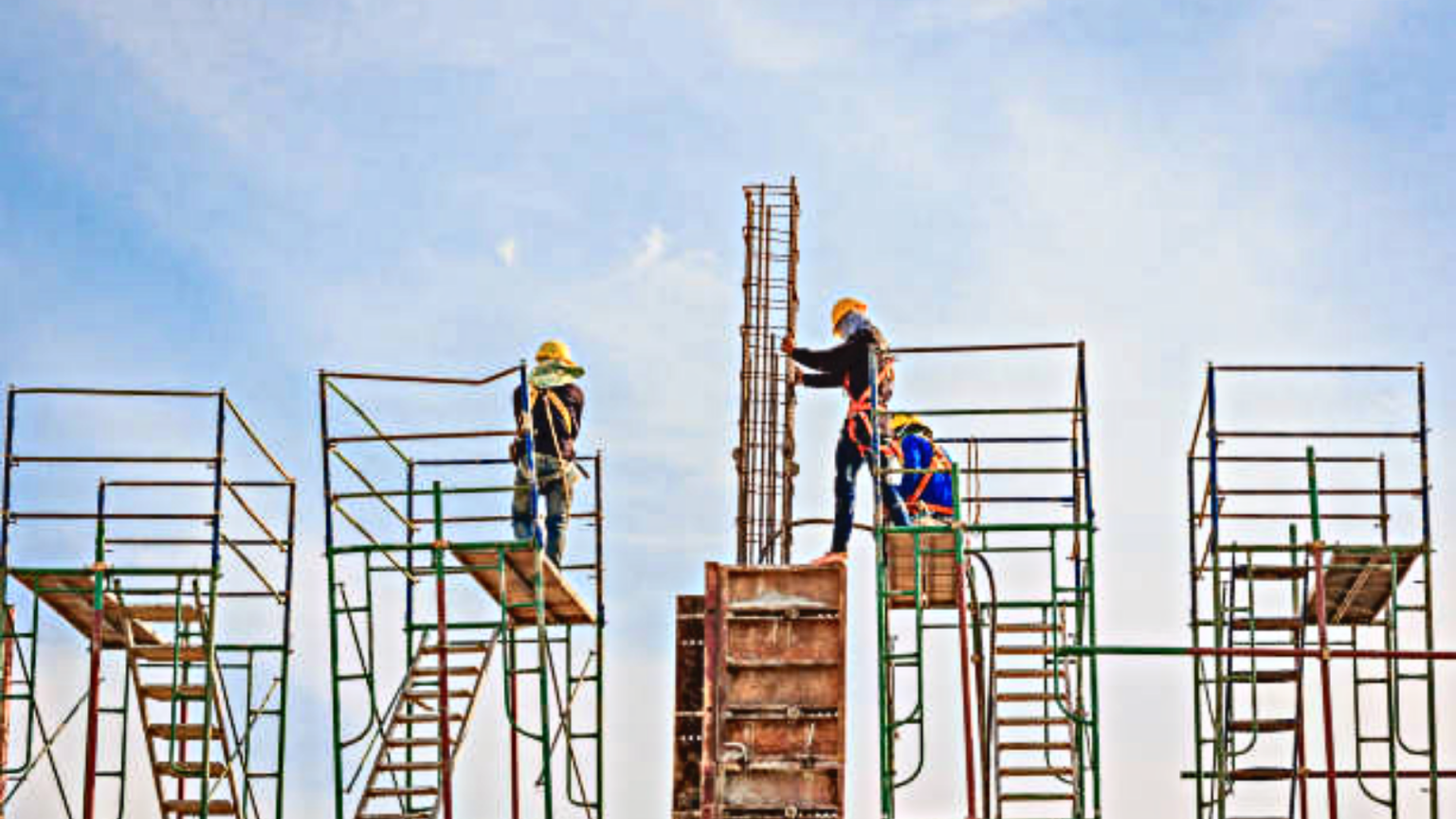
Types of scaffolding used in construction
There are several types of scaffolding, each with its own set of advantages. The type of scaffolding used is determined by the circumstances of the construction project. Each project’s size and complexity will determine which type or types are necessary to complete the work effectively and safely.
Scaffolding
Scaffolding is a temporary structure used by workers to keep them safe, provide quick access, and enhance productivity while remodeling, maintaining, repairing, or cleaning a building. It is made out of one or more planks of a suitable size and length, with different methods of support depending on the form and use.
Scaffolding is an essential component of practically all building projects and has been utilized since the beginning of time. Scaffolding, which is commonly used to gain access to structures at high heights during construction, may serve a variety of functions.
Scaffolding is sometimes used to support workers and their equipment, but it is also used to support heavy loads from construction materials such as bricks, blocks, stucco, or cast-in-place concrete, which is recognized as shoring rather than scaffolding.
Despite the fact that there are several forms of scaffolding, new versions are introduced on a regular basis. Some of the most common forms of scaffolding used all over the world are:
Different Types of Scaffolding Components
- Standards- vertical post
- Ledgers are horizontal members.
- Braces—A system of bracing.
- Putlogs-horizontal elements fastened to the building’s wall
- Transoms: Double formwork ledgers support both ends.
- Bridle: a device used to bridge gaps.
- Boarding: Platforms used by workers to stand on.
- Guard rail-utilized to keep the workers working on the board safe (planks)
- Toeboards- are boards that are set parallel to the boards near the wall.
- Soleplate or baseplate-plates used to support the guard.
- Basis jack—the formwork’s load-bearing base
- Scaffold tie-Used to attach formwork to other structures.
Types of Scaffolding
- Frame & Brace Scaffolding
- Tube & Clip Scaffolding
- Wooden & Bamboo Scaffolding
- Suspended/Swinging Scaffolding
- Shoring
- Mast Climbing Scaffolding
- Systems Scaffolding
- Staircase Tower Scaffolding
- Kwikstage Scaffolding
- Cuplock Scaffolding
- Haki Scaffoldin
Frame & Brace Scaffolding
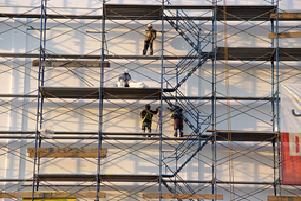
The components of this type of modular scaffolding include bases, braces, planks, and frames. This scaffold is incredibly light and easy to construct. This type of scaffolding is not as durable as system scaffolding.
In small-scale projects where scaffolding might be made mobile, frame and brace scaffolding is commonly used.
Tube & Clamp Scaffolding
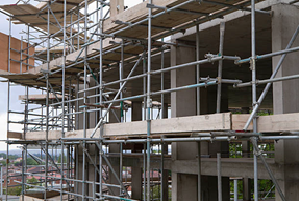
This is among the earliest forms of steel scaffolding and consists of two components, including the tubes and clips, also known as “couples.” The concept is extremely basic, and one of the reasons it’s so popular is the ease of installation and disassembly. To construct the scaffold, connect tubes together to form long runs, then join the verticals and horizontals with clamps designed specifically for these tubes.
This design is particularly adaptable since the verticals may be placed wherever they are needed. Whereas other forms of scaffolding cannot easily be formed into odd shapes, tube and clamp scaffolding may be adapted to round, straight, or irregular buildings. This scaffolding’s steel is particularly built to resist rust and corrosion, making it an ideal choice for tough weather areas.
Wooden & Bamboo Scaffolding
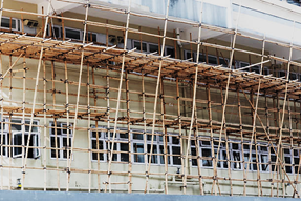
Bamboo scaffolding is a form of scaffolding constructed of bamboo that is widely used across the world. It has established itself as a useful substitute for steel and is famous for its strength, flexibility, and innovative prospects.
Suspended or Swing Set Scaffolding
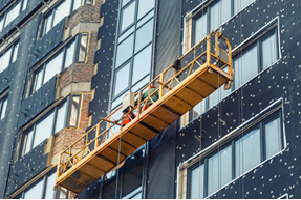
Although some scaffolders do not consider this structure to be scaffolding, designers do because it is not constructed from the ground. After all, its primary function is to support scaffolders and their equipment.
This scaffolding comprises of a platform hung by a cable system that allows the platform to ascend to different heights. Suspended scaffolds can save money on very tall buildings that require low-duty access, such as ongoing building maintenance and minor renovations.
Shoring
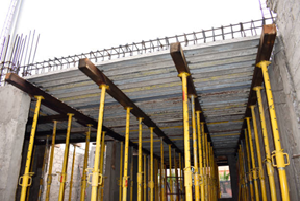
Shoring systems are temporary structures used to support permanent structures such as buildings or bridges. The formwork holds the liquid concrete until it hardens into a solid that can support itself.
Mast Climbing Scaffolding
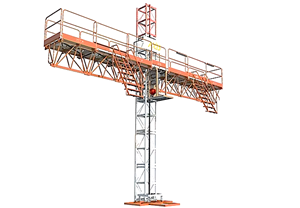
Mast climbers, like suspended scaffolding, may be extended to various heights. Instead of being supported by wires, this scaffold can climb up and down permanent mast structures built on the ground. Scaffolds that need to support heavy loads prefer this type of scaffolding.
Systems Scaffolding
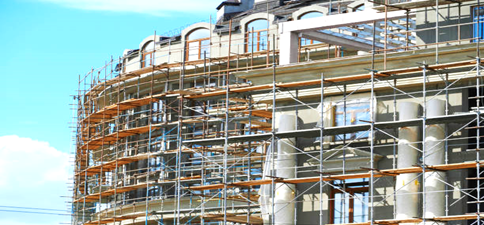
Systems scaffolding, commonly referred to as modular scaffolding, typically consists of vertical and horizontal pre-engineered components that connect to one another in a systematic way.
Systems scaffolding is one of the most commonly used forms of scaffolding worldwide, and there are hundreds of manufacturers, each with unique characteristics. Some are more suited to high-load circumstances, while others are better suited to smaller repetitive scaffold structures.
Systems scaffolding refers to a broad range of scaffolding types that may be utilized to design uniform scaffolding bays. The following are some of the most common forms of system scaffolding:
- Staircase Tower Scaffolding
- Kwikstage Scaffolding
- Cuplock Scaffolding
- Haki Scaffolding
Staircase Tower Scaffolding
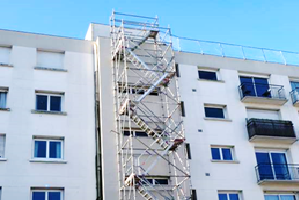
The scaffolding staircase tower is used to gain access to the main scaffolding platform for work since it is safer than using a ladder. Similarly, a staircase tower can be used to function autonomously from its own platform for little tasks such as light repair, etc. Workers may take tools and equipment up the steps, which is safer than climbing a ladder. Most system scaffold manufacturers develop particular components for use in the construction of a staircase. In addition, the access scaffolding tower is important for gaining temporary access to a building’s high height for any necessary maintenance.
Kwikstage Scaffolding
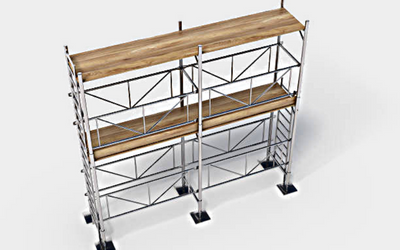
Kwikstage is a flexible and multi-purpose modular scaffolding system. This type of scaffolding system is very helpful when the building’s façade is complicated and a conventional facade scaffolding cannot be positioned.
The best feature of modular scaffolding, like the kwikstage, is that it can be customized to any shape based on the architectural layout of the building. A quick stage can also be placed on either side of the building’s facade, making the project as easy as possible.
The modular scaffolding system consists of several single components that may be joined together flexibly to create the appropriate scaffold for the project. Single components are also easier to stack, move, and connect. The quick stage scaffold remains in place and has a secure vertical alignment due to the lack of loose components. As a result, the kwikstage is a safe scaffolding system that workers may use without fear.
Due to these useful qualities, the kwikstage scaffolding system is becoming popular in the engineering and construction industries and can facilitate the installation of unusual building structures.
Kwikstage Scaffolding Advantages:
- Longevity: kwikstage scaffolding is made of durable materials that will last for a long time.
- Adaptability: KWikstage scaffolding is adaptable to various construction sites and building types.
- Increased productivity: Because this scaffolding can support multiple workers at once, productivity is increased.
- Lower maintenance costs: It doesn’t necessitate expensive maintenance.
- There are no loose fittings: the wedge lock system is screw and nut free.
- Labor Saving: This scaffold’s ability to be quickly and easily assembled and disassembled is a great feature.
Cuplock Systems Scaffolding
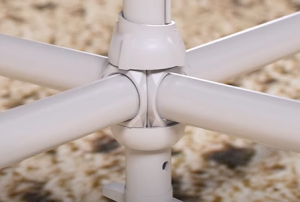
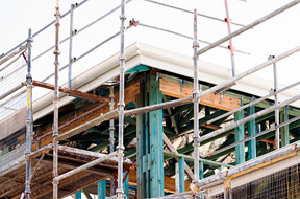
Cuplock systems scaffolding is popular due to its capacity to sustain heavy loads. It is typically composed of galvanized steel. This type of scaffolding creates highly uniform systems with cuplocks every 500 to 1,000 millimeters, which works well for scaffolding designs with repetitive patterns.
Haki Scaffolding
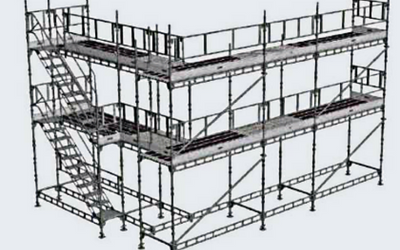
Haki is a more modern method that is used in scaffolding, shoring, and suspended systems. In contrast to other types of scaffolding, Haki is a brand name for both the manufacturer and a specific type of scaffolding system. In terms of safety, quality, and flexibility, Haki scaffolding is lighter and has fewer parts than other systems.
Why is scaffolding used in the construction industry?
1
IT ENSURES SAFETY
There is always some risk and hazard involved with working at heights. As previously stated, scaffolding platforms offer a safe and secure environment for builders to perform their tasks while working at a significant height. Scaffolding not only protects workers’ health, but security measures such as barrier netting and fencing protect the people below the scaffolding as well. These barriers catch any loose debris and aid in the development of a totally safe and secure working environment for all concerned.
2
IT’S EFFICIENT
Scaffolding provides a safe and secure platform for builders and workers to carry out their jobs. Scaffolding enhances the efficiency of any construction operation by allowing it to move swiftly and easily around structures of any form and size. It is simple to comprehend how these platforms minimize the time spent on-site when time is of the essence. That’s why scaffolding is important during construction. Scaffolding structures only require a single working day to be built.
3
QUICK ACCESS
Scaffolding allows builders and laborers to access portions of buildings that would be difficult to reach, allowing them to create and construct in a more creative manner. Platforms, especially customizable scaffolding, can also be built in such a way that workers can carry out any design or plan. Scaffolding has been utilized to create some of the world’s most renowned and famous structures.
4
PREMIER POSITION FOR WORKERS
Scaffolding provides a safe and convenient platform for builders or workers to complete their tasks. They are no longer reliant solely on ladders, which can be unstable and dangerous. When a worker or builder uses a ladder, they typically work at an angle, lack a secure environment from which they can work, and generally experience unsteady balance.In fact, scaffolding places workers in front of the building where they can easily operate on parts of the wall or ceiling. Additionally, it creates an opportunity for numerous people to work side by side at the same time, which is not possible with a ladder.
Advantages of Scaffolding
Scaffolding is well-known for making construction-related tasks easier; thus, you can feel confident knowing of its numerous benefits.
Easy Accessibility
One of the most important advantages of undertaking this process is that it is accessible. It reduces disruptions and also contributes to the creation of a secure working environment. It is easier to develop an interconnected layout that provides complete access to the entire area.
Balances Perfectly
The scaffolding provides the employees with a stable platform. It helps workers balance themselves in various positions. It can also assist with certain tasks and functions.
Safety
One of the most significant benefits of scaffolding is that it can help to increase productivity. It improves worker efficiency and makes the process safe and secure. But since construction is a physically demanding task, this can help in the construction of a better workplace.
Assembling and Dismantling
The structure of assembling and dismantling the scaffolds are simple and easy. As a result, this saves time and speeds up the process. It takes the least amount of time to put up and take down. Consider this your primary scaffolding option.
Long-Lasting
The most important benefit of this process is that the structure is long-lasting. It also provides a number of bridging points, reducing the distance that workers must travel. This saves your workers’ time and energy. Its durability ensures that the process is safe and secure.

